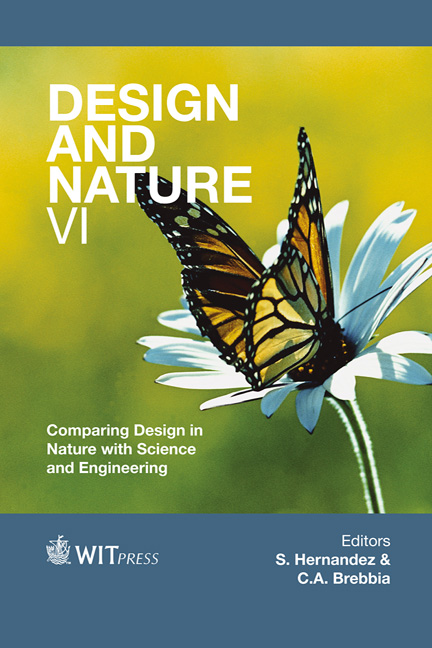Application Of Shape Optimization Method To Artificial Leaf Design
Price
Free (open access)
Transaction
Volume
160
Pages
12
Page Range
157 - 168
Published
2012
Size
5,788 kb
Paper DOI
10.2495/DN120151
Copyright
WIT Press
Author(s)
M. Shimoda1 & Y. Nakata2
Abstract
It is considered that the shapes of plant leaves are optimized under various environmental constraints. In this paper, the optimality of a leaf shape is examined by using a numerical shape optimization method. For leaves, it is necessary to have a sufficient surface area for receiving sunlight while also being stiff enough to maintain their shapes against external loads such as gravity and winds. This study focuses on an evergreen leaf with a V-shaped cross-section and a thick blade for designing the optimal shape of an artificial leaf. Stiffness, amount of sunlight received and volume are used as the response functions to evaluate leaf performance. A node-based non-parametric method with pyramidshaped basis vectors is used as the shape optimization method. The trade-off problem between the amount of sunlight received and stiffness is solved with this method. Prior to leaf shape optimization, calculated examples in engineering structural design are presented to verify the effectiveness of this method. The leaf shape optimization results show that the optimal V-shaped cross-sections were obtained according to the sunlight direction and target stiffness. Keywords: artificial leaf, shape optimization, pyramid-shaped basis vector, stiffness, sunlight, V-shaped cross section. 1 Introduction Plants have evolved by adapting to environmental stimuli. The shapes and functions of their roots, stems, branches, leaves and other organs have been determined in the process. Many researchers have been interested in this adaptive growth, and have gained numerous insights into plant shapes [1–6]. In this work,
Keywords
artificial leaf, shape optimization, pyramid-shaped basis vector, stiffness, sunlight, V-shaped cross section.





